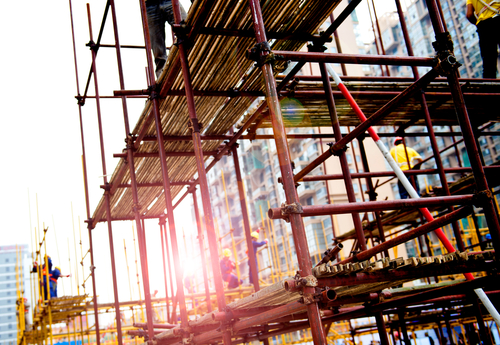Historically, asbestos has been a very useful material for a number of reasons. It has high heat resistance and electrical insulation properties, as well as being able to provide a great deal of strength whilst being light-weight in itself. However, despite its many uses, this mineral has been found to be extremely toxic due to its fibrous structure, which is easily inhaled and lodges within the lungs. Extensive or extended exposure to asbestos has led to many diseases, both malignant (mesothelioma, lung cancer, ovarian cancer and laryngeal cancer) and non-malignant conditions such as asbestosis, COPD, pleural complications and atelectasis, which involves the collapse of part of a lung or lungs. This is a mineral which, although useful, needs to be avoided as much as is possible, which is why its use is banned in the majority of countries world-wide.

What actually IS asbestos?
Asbestos is a naturally occurring fibrous silicate mineral. There are six different types of asbestos, which – technically – is a term covering different types of minerals. Asbestos is composed of two mineral families – Serpentine and Amphibole. On examination, I discovered that :
- Serpentine asbestos is composed of sheets of crystals which form curly fibres, reflecting in its name. There is only one type of asbestos in this mineral family, called chrysotile which has historically accounted for upwards of 95% of all global asbestos usage. Since the asbestos family itself was found to be so harmful to health, the majority usage of this mineral has been banned, although there are some countries which have allowed for the “controlled” usage of chrysotile alone.
- Amphibole asbestos is composed of needle-like fibres. The five remaining types of asbestos fall within this family, of which amosite and crocidolite are the most commercially valuable, whilst anthophyllite, tremolite and actinolite are viewed as being non-commercial.
How is each form of asbestos used?
Chrysotile, or white asbestos, is the most commonly used form of asbestos. In building work, it was used in roofs, ceilings, walls and floors of structures, drywall, fireproofing and many of the pipes, ducts and appliances within those structures also contained asbestos. It doesn’t end there – this type of asbestos was also used in automobile brake linings and pads, gaskets and boiler seals, and may also be found in some adhesives.
Amosite and crocidolite (‘brown’ and ‘blue’ asbestos respectively), were mainly used for insulation purposes, being found in cement sheets and pipe insulation, ceiling and vinyl tiles, insulating board, thermal insulation, certain spray-on coatings, plastics and cement products, whilst anthophyllite was also used in insulation and construction materials, but to a more limited extent. This type of asbestos, known in its natural state as grunerite was, interestingly enough, mainly mined in South Africa, as was crocidolite, although to a lesser extent.
The three forms of asbestos – anthophyllite, tremolite and actinolite – may be found as contaminants in chrysotile asbestos, vermiculite and talc. Amosite may be found in cement sheets, gaskets, insulation, fire-protection and roofing products and vinyl tiles, whilst crocidolite was used in acid storage battery casings, ceiling tiles, cement sheets, fire-proofing and insulation. Crocidolite has been thought to be responsible for the most asbestos-related deaths, due to its extremely thin needle-like fibres which are more easily inhaled.
The last member of the asbestos family to be actively used is anthophyllite, which was included in products such as cement, roofing, insulation and rubber.
How do I remove asbestos from my property?
It hardly seems fair then, that a family of minerals which are so incredibly useful can also be so harmful to health. This is a mineral which has been used as far back as the Stone Age, when it was used to strengthen ceramic pots. It has taken decades for the full extent of the danger posed by asbestos to come to light, and although it is now banned from usage in all but a very limited number of applications, it could once be found everywhere. Older buildings and homes contained incredibly high levels of asbestos, which is why there is a risk factor still in existence today. Home and building renovations, especially of older buildings, could lead to asbestos being released into the air if this is not handled by experts in asbestos handling and removal. These microscopically-thin fibres pose a danger to anyone breathing them in, even after decades, once they are disturbed and released into the air. It makes sense, if you live in a house which was built prior to the 1980’s, when asbestos use was banned in South Africa, that you make yourself aware of any materials in the house which could potentially contain this substance in some form or another, and call in the specialists to remove it safely. Even old roofs which do not need to be replaced are considered to be a static danger, as it is likely that they contain asbestos and, whilst fibres are not actively being released into the air, they still present a health hazard if disturbed for any reason.
This is not a particularly happy subject to think about, but is IS a necessary one and should never be forgotten. Your old wall panel heater may contain this mineral in some form or another, so best get it checked out, especially if, over the years and with constant changes in temperature, it has cracked. For more information and tips, see our Asbestos Specialists.
